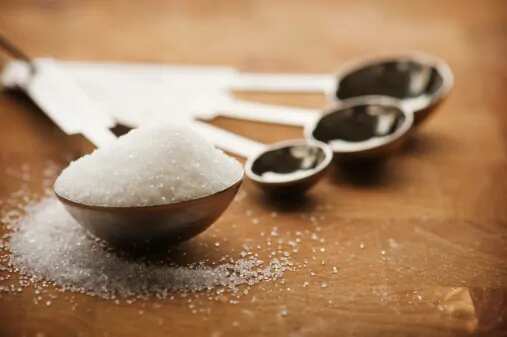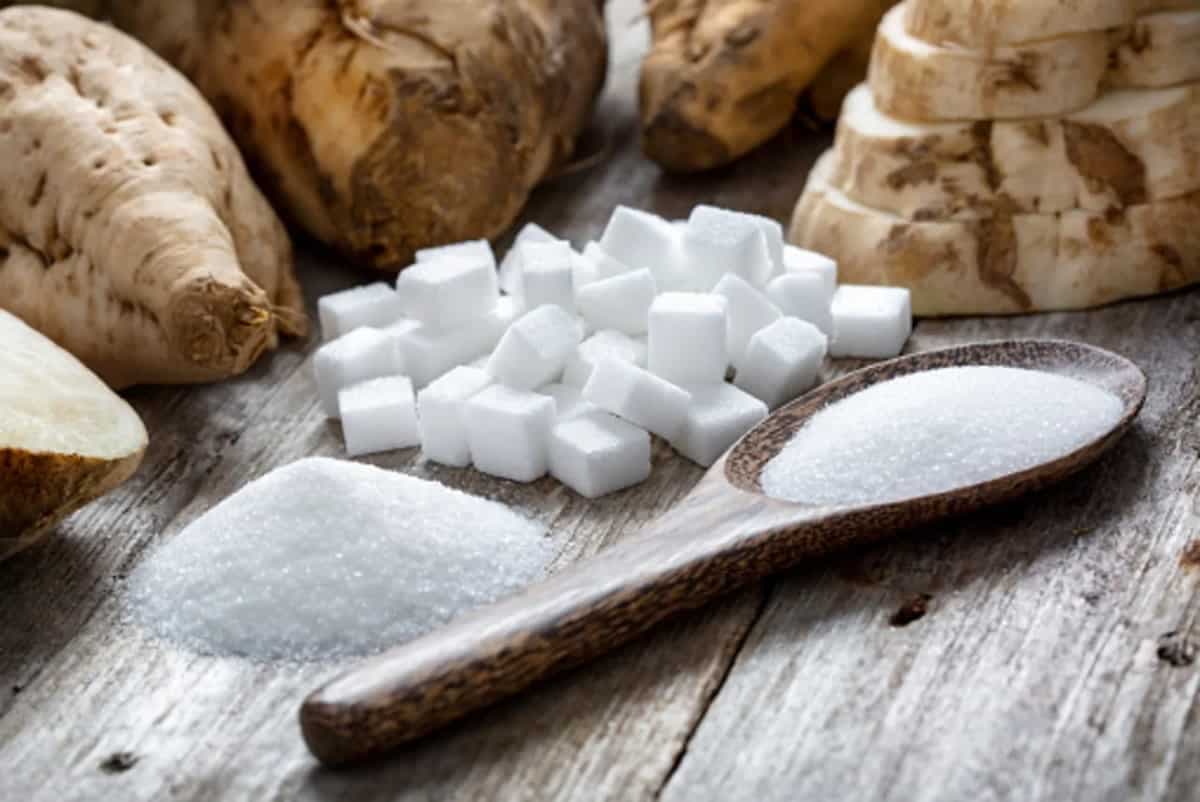Sucrose, glucose, and fructose are examples of simple carbohydrates, sometimes known as simple sugars. Glucose and fructose are forms of monosaccharides, which are single sugar molecules. Sucrose is classified as a disaccharide since it is a sugar molecule that contains both glucose and fructose. Whole foods and refined foods with added sugar are natural sources of sugar. Despite the fact that sucrose, glucose, and fructose are all-natural sugars that taste sweet to our lips, the way they are metabolised in our bodies differs substantially.
Sucrose
Sucrose is the scientific term for table sugar. Sugars are classified into two types: monosaccharides and disaccharides. During digestion, disaccharides, which are composed of two connected monosaccharides, are converted back into monosaccharides. One glucose and one fructose molecule, or 50% glucose and 50% fructose, make up the disaccharide known as sucrose. It is a naturally occurring carbohydrate that is present in a variety of fruits, vegetables, and grains. However, it is also added to a variety of processed foods, including candy, ice cream, morning cereals, canned goods, soda, and other sweetened beverages. Typically, sugar cane or sugar beets are used to extract table sugar and the sucrose included in processed foods. Compared to fructose by itself, sucrose is sweeter than glucose by itself.
Fructose
Like glucose, fructose, also known as "fruit sugar," is a monosaccharide. It occurs naturally in fruit, honey, agave nectar, and the majority of root vegetables. Furthermore, it is commonly utilised in processed foods such as high-fructose corn syrup. Sugar beets, corn, and sugar cane are the main sources of fructose. In comparison to regular corn syrup, high-fructose corn syrup is made from cornstarch and contains greater fructose than glucose. Fructose has the sweetest flavour out of the three sugars, but it also has the least effect on your blood sugar levels.
Glucose
Glucose is a monosaccharide or simple sugar. It is the preferred source of carb-based energy for your body. Because monosaccharides are composed of just one sugar molecule, they cannot be divided into more basic substances. They serve as the basis for all carbs. The most frequent way that glucose is combined with another simple sugar in meals is to create disaccharides like sucrose and lactose or polysaccharide starches. It is frequently included in processed goods, which are derived from corn or wheat. Compared to fructose and sucrose, glucose has a milder sweetness.
The Difference
Disaccharides and monosaccharides are absorbed and digested by your body in distinct ways. Monosaccharides don't need to be broken down because they are already in their most basic form, which means your body can use them right away. They are typically absorbed into your small intestine and then into your bloodstream. On the other hand, sucrose and other disaccharides must first be converted by your body into simple sugars in order for you to absorb them. The sugars are digested differently once they have reached their most basic state.
Absorption Of Glucose
Direct absorption of glucose via the small intestine's lining into the circulation, which then carries it to your cells. Compared to other sugars, it increases blood sugar more quickly, encouraging the release of insulin. For glucose to reach your cells, insulin is required. When glucose enters your cells, it either gets used right away to make energy or gets converted to glycogen and stored as glycogen in your muscles or liver for later use. Your blood sugar levels are tightly regulated by your body. Glycogen is converted to glucose and released into your blood to be utilised as energy when levels drop too low. Your liver can produce this kind of sugar from other fuel sources if glucose is not available.
Absorption Of Fructose
Fructose is taken from the small intestine straight into circulation, just like glucose is. Compared to glucose, it increases blood sugar levels more gradually, and it does not seem to have an immediate impact on insulin levels. Fructose may not immediately elevate blood sugar levels, but it may have more detrimental long-term effects. Prior to being utilised by your body as fuel, fructose must first be converted by your liver into glucose. Consuming a lot of fructose while maintaining a high-calorie diet can increase blood triglyceride levels. Increased risk of metabolic syndrome and nonalcoholic fatty liver disease is also associated with excessive fructose consumption.
Absorption Of Sucrose
Sucrose is partially converted into glucose and fructose by natural enzymes in your mouth. However, the small intestine is where the majority of sugar digestion takes place. Your small intestine produces the enzyme sucrase, which breaks down sucrose into glucose and fructose. Following this, the glucose and fructose are absorbed into your bloodstream as previously mentioned. The presence of glucose promotes the release of insulin and increases the absorption of fructose. Fructose overabsorption can encourage the liver's increased production of fat reserves. Therefore, consuming fructose and glucose together may be more detrimental to your health than consuming them individually. It may clarify why many health problems are associated with added sugars like high fructose corn syrup.


